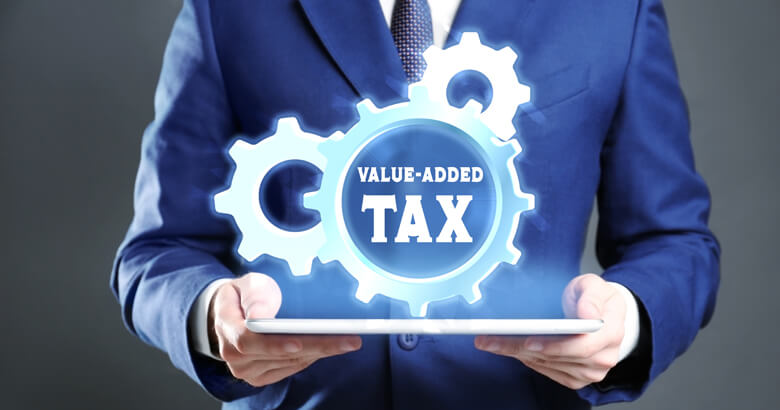
Value Added Tax (VAT) is a consumption tax levied on the value added to goods and services at each stage of production and distribution. It is a significant source of revenue for governments worldwide, providing funding for public services, infrastructure development, and social welfare programs. Understanding VAT regulations, rates, and compliance requirements is essential for businesses selling goods and services to ensure compliance with tax laws and optimize their financial operations. In this comprehensive guide, we will delve into the intricacies of VAT, provide examples of VAT regulations, rates, and compliance requirements, and offer insights into how businesses can navigate the VAT landscape effectively.
Understanding VAT
VAT is a tax levied on the value added to goods and services at each stage of production and distribution. Unlike traditional sales taxes, which are imposed only on the final sale of goods and services to consumers, VAT is applied at multiple stages of the supply chain, including manufacturing, distribution, and retail.
The key features of VAT include
– Input-Output Mechanism: VAT operates on an input-output mechanism, allowing businesses to offset the VAT they pay on purchases (input tax) against the VAT they collect on sales (output tax). The difference between input tax and output tax is remitted to the government.
– Taxable Supplies: VAT applies to taxable supplies of goods and services made in the course of business activities. Taxable supplies include sales of goods, provision of services, imports of goods, and intra-community acquisitions.
– Registration Threshold: Businesses that exceed a certain threshold of taxable turnover are required to register for VAT purposes and charge VAT on their sales. The registration threshold varies by country and may be based on annual turnover or other criteria.
– Taxable Persons: VAT applies to taxable persons engaged in economic activities, including businesses, sole traders, partnerships, and corporations. Taxable persons are responsible for complying with VAT regulations, collecting and remitting VAT on taxable supplies, and maintaining proper records.
VAT Regulations, Rates, and Compliance Requirements
VAT regulations, rates, and compliance requirements vary by country and jurisdiction, but certain common principles apply across jurisdictions. Let’s explore some examples of VAT regulations, rates, and compliance requirements for businesses:
VAT Registration
– Thresholds: Businesses must register for VAT once they exceed the registration threshold set by the tax authorities. In the UK, for example, the VAT registration threshold is £85,000 of taxable turnover in a 12-month period.
– Voluntary Registration: Businesses below the registration threshold may opt to register for VAT voluntarily, which can be beneficial for reclaiming input tax credits and presenting a professional image to customers.
VAT Rates
– Standard Rate: Most goods and services are subject to the standard rate of VAT, which varies by country. In the UK, the standard rate of VAT is 20%.
– Reduced Rate: Some goods and services may qualify for a reduced rate of VAT, typically applied to essentials such as food, children’s clothing, and domestic fuel. The reduced rate is lower than the standard rate and may vary by country.
– Zero Rate: Certain goods and services are zero-rated for VAT purposes, meaning that VAT is charged at 0%. Examples of zero-rated goods and services may include basic food items, medical supplies, and exports.
VAT Invoices
– Content: VAT-registered businesses must issue VAT invoices to customers for all taxable supplies made. VAT invoices must include specific information such as the supplier’s name and address, customer’s name and address, VAT registration number, description of goods or services, and VAT amount charged.
– Timeframe: VAT invoices must be issued within a certain timeframe prescribed by VAT regulations, typically within a specified period following the supply of goods or services.
VAT Returns

– Filing Periods: VAT-registered businesses are required to file VAT returns with the tax authorities at regular intervals, usually quarterly or annually. The VAT return summarizes the VAT collected on sales (output tax) and paid on purchases (input tax) during the reporting period.
– Deadlines: VAT returns must be filed by the deadline specified by the tax authorities, accompanied by payment of any VAT due. Failure to file VAT returns on time may result in penalties and interest charges.
VAT Compliance
– Record Keeping: VAT-registered businesses must maintain accurate records of all sales, purchases, and VAT transactions for a specified period, typically several years. Proper record-keeping is essential for VAT compliance, audits, and investigations by the tax authorities.
– Compliance Checks: Tax authorities conduct compliance checks and audits to verify that businesses are complying with VAT regulations and accurately reporting their VAT liabilities. Businesses selected for audit must cooperate with tax authorities and provide access to relevant records and documentation.
Example of VAT Compliance for a UK-based Business
Let’s consider an example of a UK-based retail business selling clothing and accessories subject to the standard rate of VAT (20%). The business exceeds the VAT registration threshold and is required to register for VAT with HM Revenue & Customs (HMRC).
– VAT Registration: The business applies for VAT registration with HMRC once its taxable turnover exceeds £85,000 in a 12-month period. Upon successful registration, the business receives a VAT registration number and is required to charge VAT on its sales.
– VAT Invoices: The business issues VAT invoices to customers for all taxable sales made, including detailed information such as the supplier’s name and address, customer’s name and address, description of goods sold, VAT rate and amount, and total amount payable.
– VAT Returns: The business files quarterly VAT returns with HMRC, reporting the VAT collected on sales (output tax) and paid on purchases (input tax) during the reporting period. The business calculates its VAT liability by subtracting input tax from output tax and remits any VAT due to HMRC by the deadline.
– Record Keeping: The business maintains accurate records of all sales, purchases, and VAT transactions, including invoices, receipts, bank statements, and accounting records. These records are retained for the prescribed period and made available for inspection by HMRC if requested.
Conclusion
Value Added Tax (VAT) is a fundamental component of the tax system in many countries, providing governments with revenue to fund public services and infrastructure. For businesses selling goods and services, understanding VAT regulations, rates, and compliance requirements is essential to ensure compliance with tax laws and minimize the risk of penalties and fines. By adhering to VAT regulations, maintaining accurate records, and filing VAT returns on time, businesses can navigate the VAT landscape effectively and contribute to a fair and efficient tax system.


